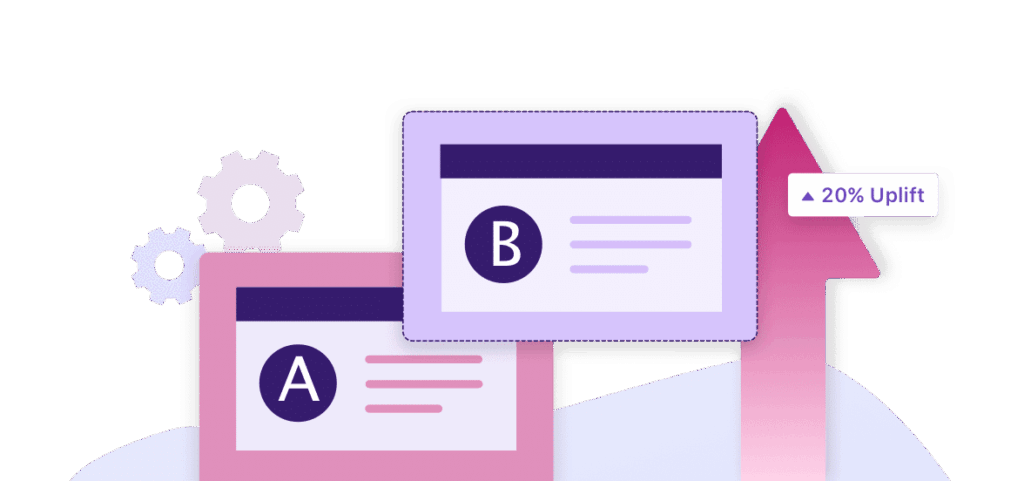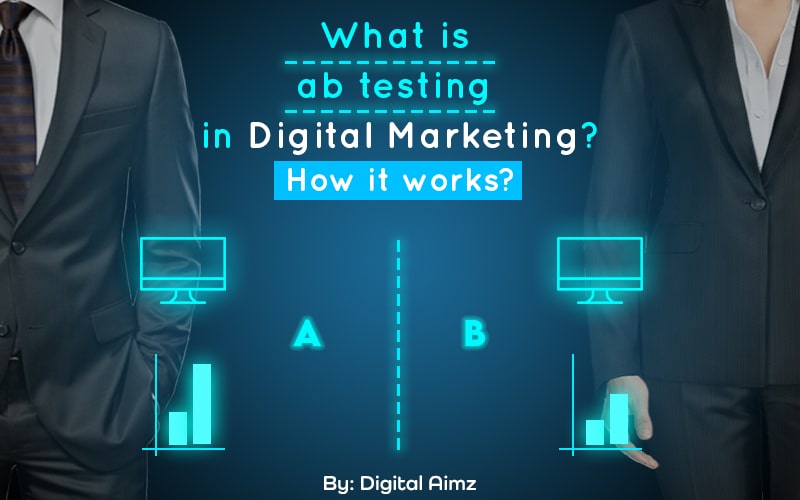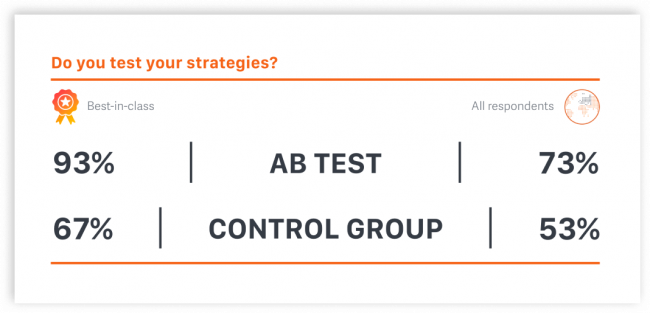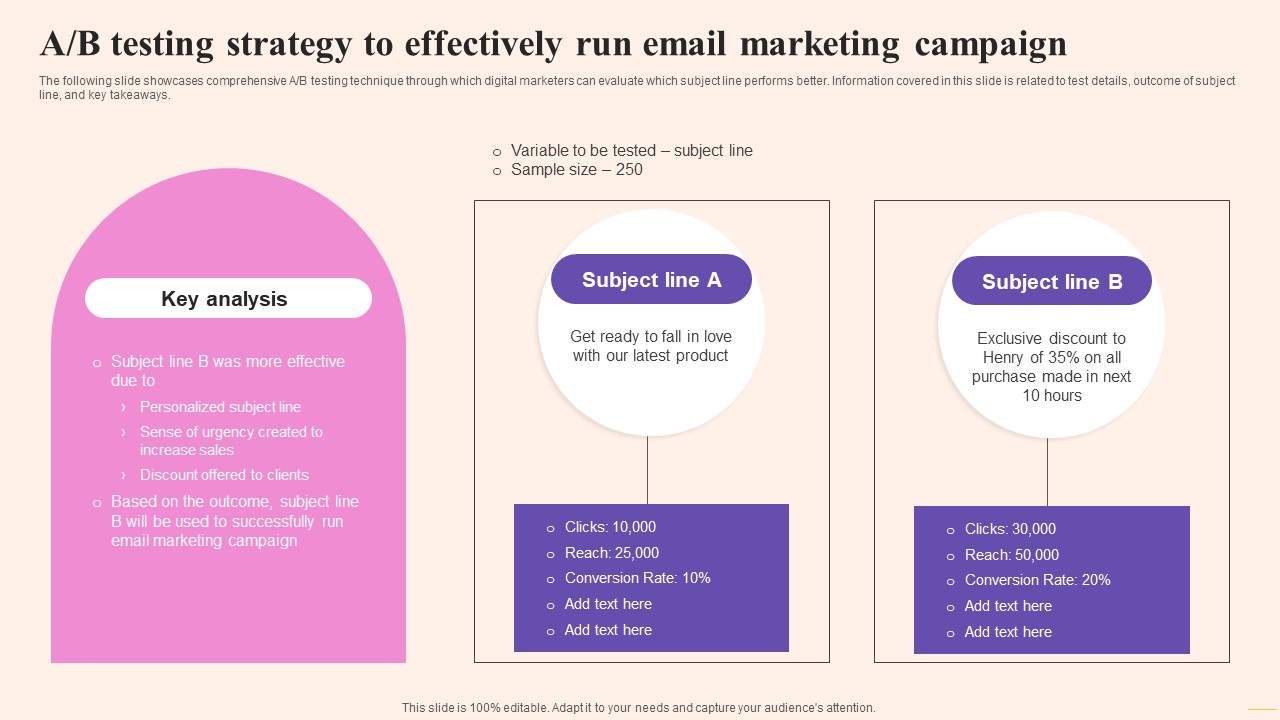
CRM Marketing & A/B Testing: The Ultimate Guide to Skyrocketing Conversions
In the ever-evolving landscape of digital marketing, staying ahead of the curve is paramount. Businesses today are bombarded with a plethora of marketing tools and strategies, each vying for attention and promising unparalleled results. However, the most effective strategies are often those that are data-driven and meticulously refined. This is where the synergy between CRM marketing and A/B testing shines. This comprehensive guide will delve into the depths of this powerful combination, equipping you with the knowledge and tools to transform your marketing efforts and achieve remarkable conversion rates.
Understanding the Power of CRM Marketing
Customer Relationship Management (CRM) marketing is more than just a buzzword; it’s a philosophy centered on building and nurturing lasting relationships with your customers. A robust CRM system acts as the central nervous system of your marketing operations, providing a 360-degree view of each customer. This holistic understanding allows you to personalize your interactions, tailor your messaging, and ultimately, drive more meaningful engagement.
The Core Benefits of CRM Marketing
- Improved Customer Segmentation: CRM systems allow you to segment your audience based on various criteria, such as demographics, purchase history, and engagement levels. This granular segmentation enables you to target specific customer groups with highly relevant messaging.
- Personalized Customer Experiences: By understanding individual customer preferences and behaviors, you can create personalized experiences that resonate with each person. This can range from personalized email campaigns to customized website content.
- Increased Customer Loyalty: When customers feel valued and understood, they are more likely to remain loyal to your brand. CRM marketing helps you cultivate these strong customer relationships.
- Enhanced Sales Efficiency: CRM systems streamline the sales process by automating tasks, providing sales representatives with access to critical customer data, and enabling better lead management.
- Data-Driven Decision Making: CRM platforms provide valuable insights into customer behavior, campaign performance, and sales trends. This data empowers you to make informed decisions and optimize your marketing strategies.
Key Components of a Successful CRM Marketing Strategy
Building a successful CRM marketing strategy requires a well-defined plan and the right tools. Here are some essential components:
- Choosing the Right CRM Software: Selecting the right CRM platform is crucial. Consider your business size, industry, budget, and specific needs when making your choice. Popular options include Salesforce, HubSpot, Zoho CRM, and Microsoft Dynamics 365.
- Data Collection and Management: A robust CRM system is only as good as the data it contains. Implement strategies for collecting accurate and up-to-date customer data, and establish clear data management protocols.
- Segmentation and Targeting: Define your target audiences and segment your customer base based on relevant criteria. This will allow you to tailor your messaging and offers for maximum impact.
- Personalization: Leverage customer data to personalize your interactions. Use customer names, purchase history, and other relevant information to create a more engaging experience.
- Automation: Automate repetitive tasks, such as email marketing and lead nurturing, to save time and improve efficiency.
- Reporting and Analysis: Regularly track key performance indicators (KPIs) and analyze your results to identify areas for improvement.
The Essence of A/B Testing in Marketing
A/B testing, also known as split testing, is a powerful method for optimizing marketing campaigns by comparing two versions of a specific element to determine which one performs better. This data-driven approach allows you to make informed decisions about your marketing efforts, ensuring that every aspect of your campaign is working as effectively as possible.
Why A/B Testing is Essential
- Data-Driven Optimization: A/B testing removes the guesswork from marketing. Instead of relying on intuition, you make decisions based on real-world data.
- Improved Conversion Rates: By testing different variations of your marketing elements, you can identify the most effective approaches for driving conversions.
- Increased ROI: A/B testing helps you maximize your return on investment (ROI) by optimizing your campaigns for performance.
- Enhanced Customer Experience: A/B testing allows you to refine your messaging and design to create a more engaging and user-friendly experience for your customers.
- Continuous Improvement: A/B testing is an ongoing process that allows you to continuously refine your marketing efforts and stay ahead of the competition.
Key Elements to A/B Test
A/B testing can be applied to a wide range of marketing elements. Here are some of the most common areas to focus on:
- Website Headlines: Test different headline variations to see which ones capture attention and drive clicks.
- Call-to-Actions (CTAs): Experiment with different CTA buttons, wording, and placement to optimize for conversions.
- Landing Page Content: A/B test different content layouts, headlines, and images to improve engagement and conversions.
- Email Subject Lines: Test different subject lines to improve open rates.
- Email Body Content: A/B test different email copy, images, and CTAs to improve click-through rates.
- Ad Copy: Test different ad copy variations to improve click-through rates and conversion rates.
- Website Design: Test different design elements, such as navigation, color schemes, and imagery, to improve user experience and conversions.
The Synergy: CRM Marketing and A/B Testing
The true power of CRM marketing is unleashed when combined with the data-driven insights of A/B testing. This dynamic duo allows you to create highly personalized and optimized marketing campaigns that resonate with your target audience and drive exceptional results.
How CRM Data Fuels A/B Testing
CRM data provides a wealth of information that can be used to inform and enhance your A/B testing efforts. Here’s how:
- Audience Segmentation: CRM data allows you to segment your audience based on various criteria, such as demographics, purchase history, and engagement levels. This enables you to run A/B tests on specific customer segments, ensuring that your tests are relevant and targeted.
- Personalization: CRM data can be used to personalize your A/B tests. For example, you can test different email subject lines, content variations, or landing page designs based on individual customer preferences.
- Behavioral Insights: CRM data provides insights into customer behavior, such as which products they’ve viewed, what they’ve added to their cart, and how they’ve interacted with your website or emails. This information can be used to inform your A/B tests and identify areas for improvement.
- Testing Different Customer Journeys: CRM data can be used to track the entire customer journey, from initial contact to purchase and beyond. This allows you to A/B test different stages of the customer journey to optimize the overall experience.
Implementing A/B Testing Within Your CRM Strategy
Integrating A/B testing into your CRM strategy is a crucial step towards optimizing your marketing efforts. Here’s a step-by-step guide:
- Define Your Goals: Before you start testing, clearly define your goals. What are you trying to achieve? Are you looking to increase conversions, improve click-through rates, or boost customer engagement?
- Identify Key Metrics: Determine the key metrics that you will use to measure the success of your A/B tests. These metrics should align with your goals.
- Segment Your Audience: Use your CRM data to segment your audience based on relevant criteria. This will allow you to run targeted A/B tests on specific customer groups.
- Choose Your Testing Tool: Select an A/B testing tool that integrates with your CRM system. Popular options include Optimizely, VWO, and Google Optimize.
- Develop Your Hypotheses: Based on your goals and audience segmentation, develop hypotheses about what you expect to see in your A/B tests.
- Create Your Variations: Create different variations of the element you are testing. Make sure to test only one element at a time to isolate the impact of each change.
- Run Your Tests: Run your A/B tests for a sufficient period of time to collect enough data to draw statistically significant conclusions.
- Analyze Your Results: Analyze the results of your A/B tests to determine which variation performed best.
- Implement Changes: Implement the changes that yielded the best results.
- Iterate and Optimize: A/B testing is an ongoing process. Continue to run tests, analyze your results, and optimize your marketing efforts for continuous improvement.
Real-World Examples of CRM and A/B Testing in Action
The combination of CRM marketing and A/B testing can yield impressive results. Here are a few examples of how businesses have leveraged this powerful synergy:
- E-commerce Retailer: An e-commerce retailer used CRM data to segment its email list and personalize email campaigns. They A/B tested different email subject lines, content variations, and CTAs, resulting in a 20% increase in click-through rates and a 15% increase in conversions.
- Software Company: A software company used CRM data to identify its most valuable customers and run targeted A/B tests on its landing pages. They tested different headline variations, content layouts, and pricing models, resulting in a 25% increase in lead generation and a 10% increase in sales.
- Financial Services Provider: A financial services provider used CRM data to personalize its website content and run A/B tests on its online application form. They tested different form layouts, field labels, and error messages, resulting in a 10% reduction in application abandonment rates and a 5% increase in completed applications.
Best Practices for Successful CRM Marketing and A/B Testing
To maximize the effectiveness of your CRM marketing and A/B testing efforts, consider these best practices:
- Start Small: Don’t try to do too much at once. Start with a few targeted A/B tests and gradually expand your testing efforts.
- Focus on High-Impact Areas: Prioritize testing elements that have the greatest potential impact on your goals.
- Test One Element at a Time: To isolate the impact of each change, test only one element at a time.
- Run Tests for Sufficient Duration: Allow enough time for your tests to collect statistically significant data.
- Use Clear and Concise Language: Ensure that your messaging is clear, concise, and easy to understand.
- Track Everything: Meticulously track your results and analyze your data to identify trends and patterns.
- Document Your Findings: Keep a detailed record of your A/B tests, including your hypotheses, variations, results, and conclusions.
- Continuously Iterate: A/B testing is an ongoing process. Continuously run tests, analyze your results, and optimize your marketing efforts for continuous improvement.
- Prioritize Customer Experience: Always keep the customer experience at the forefront of your efforts.
- Stay Updated: Keep up-to-date with the latest trends and best practices in CRM marketing and A/B testing.
Tools and Technologies to Supercharge Your Efforts
Leveraging the right tools can significantly streamline your CRM marketing and A/B testing efforts. Here are some essential tools to consider:
- CRM Platforms: As mentioned earlier, choosing the right CRM platform is crucial. Salesforce, HubSpot, Zoho CRM, and Microsoft Dynamics 365 are popular choices.
- A/B Testing Tools: Optimizely, VWO, and Google Optimize are leading A/B testing platforms.
- Email Marketing Platforms: Mailchimp, Constant Contact, and ActiveCampaign are popular email marketing platforms that often integrate with CRM systems.
- Analytics Tools: Google Analytics, Adobe Analytics, and Mixpanel provide valuable data insights.
- Customer Data Platforms (CDPs): CDPs like Segment and Tealium can help unify customer data from various sources.
- Marketing Automation Platforms: Platforms like Marketo and Pardot can automate complex marketing workflows.
Measuring Success: Key Metrics to Track
To truly understand the impact of your CRM marketing and A/B testing efforts, it’s essential to track the right metrics. Here are some key performance indicators (KPIs) to monitor:
- Conversion Rates: The percentage of visitors who complete a desired action, such as making a purchase or filling out a form.
- Click-Through Rates (CTR): The percentage of users who click on a link or CTA.
- Open Rates: The percentage of emails that are opened by recipients.
- Bounce Rates: The percentage of visitors who leave your website without interacting with it.
- Customer Acquisition Cost (CAC): The cost of acquiring a new customer.
- Customer Lifetime Value (CLTV): The predicted revenue a customer will generate over their relationship with your business.
- Return on Investment (ROI): The profitability of your marketing campaigns.
- Website Traffic: Track overall website traffic and traffic sources.
- Lead Generation: Monitor the number of leads generated.
- Sales Revenue: Track overall sales revenue and revenue per customer.
The Future of CRM Marketing and A/B Testing
The landscape of marketing is constantly evolving, and the future of CRM marketing and A/B testing is likely to be shaped by several key trends:
- Artificial Intelligence (AI): AI is already playing a significant role in marketing, and its influence will only continue to grow. AI can be used to personalize customer experiences, automate marketing tasks, and analyze data to identify patterns and insights.
- Machine Learning (ML): ML algorithms can be used to predict customer behavior, personalize content, and optimize marketing campaigns.
- Hyper-Personalization: The ability to deliver highly personalized experiences based on individual customer preferences and behaviors will become increasingly important.
- Data Privacy: With growing concerns about data privacy, businesses will need to be transparent about how they collect and use customer data.
- Omnichannel Marketing: The ability to deliver a seamless customer experience across all channels will become increasingly important.
- Voice Search Optimization: Optimizing for voice search will become increasingly important as voice assistants become more prevalent.
Conclusion: Embrace the Power of Data and Personalization
CRM marketing and A/B testing are not just separate strategies; they are powerful allies in the quest for marketing excellence. By combining the customer-centric focus of CRM with the data-driven insights of A/B testing, you can create highly personalized and optimized marketing campaigns that drive exceptional results. Embrace the power of data, prioritize the customer experience, and continuously refine your efforts to stay ahead of the curve. The future of marketing belongs to those who can effectively leverage the synergy between CRM and A/B testing.
By implementing the strategies and best practices outlined in this guide, you can transform your marketing efforts, build stronger customer relationships, and achieve remarkable conversion rates. The journey may require effort and dedication, but the rewards—increased revenue, enhanced customer loyalty, and a competitive edge—are well worth it. Start today, and unlock the true potential of your CRM marketing and A/B testing strategies.


